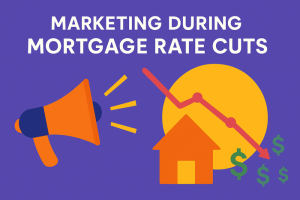Summary
This article discusses the importance of a consultative selling approach in the mortgage industry. Learn how building trust, understanding customer needs, and offering personalized solutions can result in more closed deals and lasting client relationships. By the end, you’ll know how to apply consultative selling techniques to improve your mortgage sales.
Are you familiar with the concept of consultative selling? Here’s how to make this innovative sales approach work for your mortgage business.
How To Use Consultative Selling For Mortgages
Let’s say you’re in the market for something essential and mundane but at the same time, expensive and complicated, with a lot of features. Like a new washer and dryer. Your old one died out, and you need one right away, so you go to a store that sells one brand and one brand only. The sales person shows you what he has, but he doesn’t have much. You ask about other brands, and he can’t tell you anything about them, because he doesn’t carry that brand. He actually tells you the other brands break down a lot and are expensive to maintain. You sense that he’s pushing what he has to sell instead of being honest and objective. You leave, disappointed.
Next day, you go to a big box retailer where they carry all the major brands. The salesperson asks you a few questions about how many loads you do and how many people are in your family. He’ll probably also ask if you need electric or gas and if you prefer a top loader or front loader. And he’ll definitely ask about your budget. Armed with all this information, he’ll show you two or three models that could meet your needs. You trust him and his recommendations because he seems like he isn’t beholden to selling one brand or model. He’s on your side. He wants to help.
Now think about your customer, needing a mortgage.
They’re buying a house, and unless they can pay cash, a mortgage is an essential but mundane item. It’s not something that’s fun to shop for, like a new car. It’s more like a washer/dryer. They need a mortgage, and they want the cheapest loan that will meet their needs.
They could go to their bank, which is kind of like going to a store that sells one brand and one brand only. You could tell your banker you’ve heard about interest only loans, but if that bank doesn’t offer them, he can’t help you. You leave, disappointed, convinced the bank officer didn’t really have your best interests at heart.
That’s where you come in. You’re a seasoned loan officer working at a company with a wide variety of loan programs. You pick up the phone or respond to an email from a new client who just got their offer accepted on a house. You ask them the purchase price and how much they’re putting down. They tell you they need $400,000 to buy a house for $500,000. And they’re shopping. They want the best deal possible. They ask you to quote them a thirty year fixed rate.
This is where you turn the conversation around. Instead of giving them a rate (which will basically end the call in two or three seconds once they’ve gotten what they wanted), you ask a series of questions. Questions like: how long do you plan on being in the home? Are you or your partner planning on taking any time off from work in the next five to ten years? Do you anticipate your income going up or down? Do you have any major expenses on the horizon, like college or graduate school?
Check out our case study on using consultative selling techniques for borrowers with variable income streams.
What you’re doing now is acting more like a loan consultant than a loan officer.
What’s the difference? A loan officer sits across the table from his customer and pushes a loan at the borrower. A loan consultant, on the other hand, sits on the same side of the table as the customer, and helps them analyze a bewildering array of mortgage options available to them. Think of yourself as a guide, helping them navigate a tricky trail to get to their goal.
Yes, your customer needs a loan to buy a house. But if you step back and think about what they really need, it’s a stream of affordable payments with minimal interest rate risk for the duration of their holding period for this loan. Could that be a thirty year fixed? Sure. Could it also be a first and a second mortgage so that when they sell their vacation home and come into fifty grand in cash they can pay off that second and be left with the low payments on their $350,000 first? Or if one borrower will be going back to graduate school shortly after closing, would they be better off with an interest only loan or a long term adjustable rate mortgage to offer them payment relief in this transitional period?
Let’s make one thing clear:
you’re not comparing different loans based on price. That would be the natural role of a mortgage broker, who shops around to find the best rate. You’re comparing loans based on features and options. If your client needs a $400,000 loan, there are many different loans that will get her from Point A to Point B. Your job is to help her choose the one that best meets his needs.
What if your customer only wants a thirty year fixed? That’s fine. You can show her your thirty year fixed, but show it last. First mention the low rate and payment on a seven year ARM. Then calculate the payment on an interest only loan. Talk about the reasons he might want to save money over his holding period by taking one of these lower payment options. Quote a rate with a point. Calculate the break even by paying a point and explain how they’re tax deductible when you buy a primary residence. You are educating your customer – not pressuring them into applying. You are almost indifferent as to what loan they take, as long as they take the loan that’s right for them. You’re not on commission (even if you are, your mindset should be that you’re not). You’re there to advise them, counsel them, help them. Your reward is saving them money on their mortgage.
Get it?
After you’ve gone through all this and saved them $124 a month so they can put that money away for their daughter’s college, then and only then, quote the rate and payment for a thirty year fixed. By that time, even if they hang up after getting the quote, they will come back to you, because you have earned their trust. They believe you are on their side. You have their best interests at heart.
After reading this article, you’ll probably want to try it out. But it doesn’t work all the time. Here’s when the consultative sales approach doesn’t work:
When your borrower is stressed. If they don’t have time to listen to you or answer questions about their financial situation, they will perceive your questions as time wasters and annoyances. Another time this approach won’t work is if you are the last call at the end of their search. If they already have a commitment letter from another bank and are just shopping for a rate (or looking for a quote they can wave in front of their bank to get a better deal) then you’re wasting your time.
The last time this approach won’t work is if they have no respect for you or your time. When they just push you to quote them a rate and cannot engage in a thorough, respectful discussion of their financing needs.
Next time you need to buy something that’s kind of boring but totally essential, see how the sales person treats you.
And learn some techniques. As much as possible, adopt this attitude: You’re not beholden to one brand or one type of loan. You are a consultant, and your role is to help the customer understand their financing options. There’s conventional, there’s FHA, there’s VA. You’ve got fixed, you’ve got ARMs, you’ve got first time home buyer options, interest only loans, and bank statement loans. You’ve got loans where they have to stick to 43% debt-to-income ratios and you’ve got loans that will allow up to 55% DTI. Loans where you can use the primary wage earner’s credit score and you’ve got loans that have no minimum credit score. Even loans where they can use liquid assets to qualify and loans where you can use the equity in second homes or rental properties for down payment or closing costs. You have a whole universe of financing options at your fingertips that will let you meet any individual’s financing needs.
The value of a consultative selling approach is that you now come across as their advocate. Armed with knowledge about their personal financial situation, you can help them choose the type of loan that’s right for them. You are not there to sell them something they don’t need. You’re there to help them find something they do need and that’s very powerful.
Key Takeaways
- Focus on building long-term relationships
Consultative selling involves understanding clients’ unique needs and offering tailored solutions, fostering lasting relationships and trust with borrowers.
- Provide valuable insights to guide clients’ decisions
Mortgage professionals using consultative selling educate clients on their options and guide them through the decision-making process, making them feel more confident in their choices.
- Listen actively to understand client needs
Successful consultative selling requires actively listening to clients and addressing their concerns, helping to position your services as the ideal solution.
Commonly Asked Questions
- What is consultative selling in mortgage sales?
Consultative selling focuses on understanding the client’s needs and providing tailored mortgage solutions, rather than pushing a one-size-fits-all product.
- How does consultative selling improve customer relationships?
By focusing on the client’s goals and concerns, consultative selling builds trust and fosters long-term relationships, resulting in greater client satisfaction and loyalty.
- What skills are essential for consultative selling in mortgages?
Essential skills include active listening, empathy, problem-solving, and deep product knowledge to offer the best mortgage options for clients.
- Why is consultative selling more effective than traditional selling methods?
Consultative selling is more effective because it positions the mortgage professional as a trusted advisor, leading to better outcomes for clients and higher conversion rates.





